Article first published June 2016, updated June 2019
Many of the world’s best-known publishers like BuzzFeed, VICE, Reddit, Fashion Magazine, Apartment Therapy, and Rolling Stone use email marketing as a highly effective and engaging strategy to grow their audience, increase brand awareness, reach subscribers, and promote and sell everything from books and magazines to online subscriptions and ad space.
Modern publishers are looking to drive traffic back to their websites so subscribers can consume new content, make purchases, or continue their subscription through things like email courses. Emails provide a direct path for them to stay digitally engaged.
In this post, we’ll review how three publishers grow their audience and drive results using email marketing.
Apartment Therapy
Apartment Therapy is a lifestyle and interior design community sharing design lessons, DIY how-tos, shopping guides, and expert advice for creating a happy, beautiful home.
In their mission to help people make their homes more beautiful, healthy, and organized, Apartment Therapy’s newsletters are the perfect way to curate and deliver their most engaging content to their subscribers and drive traffic to their sites.
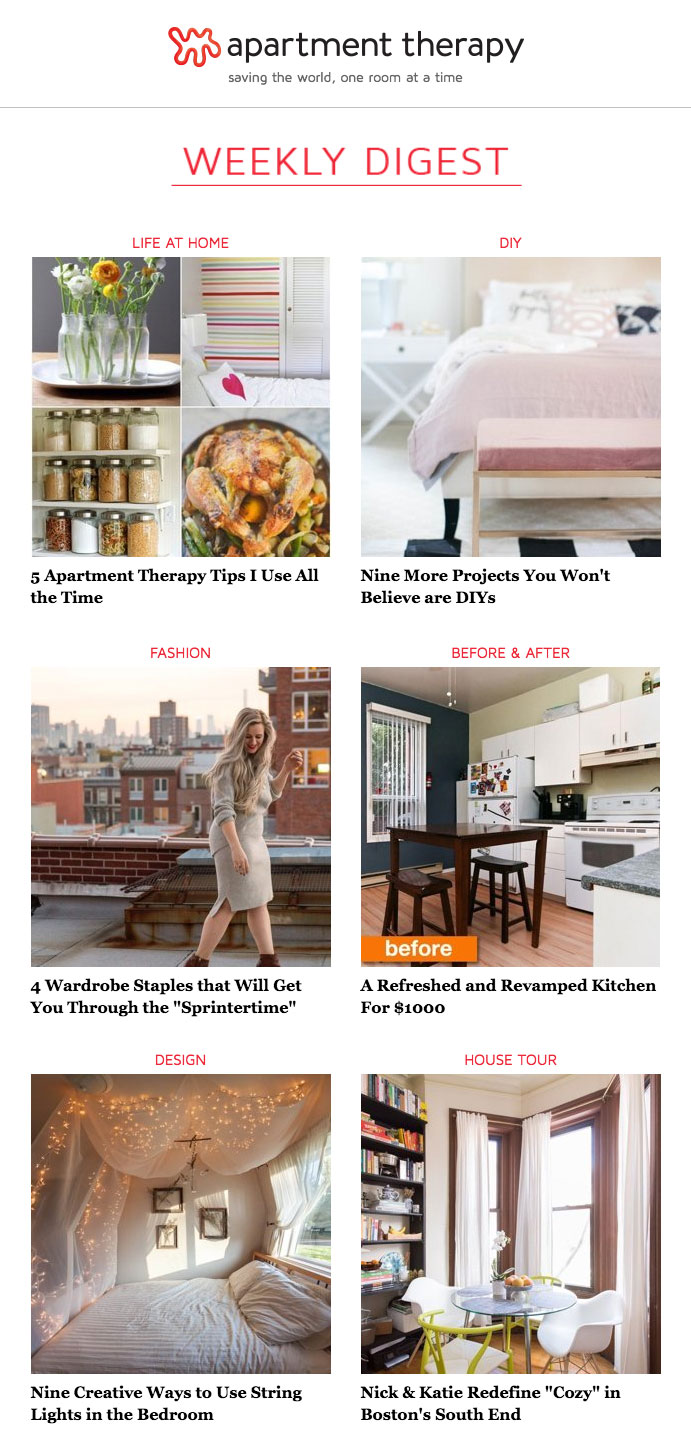
Apartment Therapy partners with complementary brands for giveaways, like an epic shopping spree. To be entered for a chance to win, it’s as easy as providing your email address. Since partners promote these programs to their audiences, giveaways have become one of their most successful tactics for acquiring new subscribers.
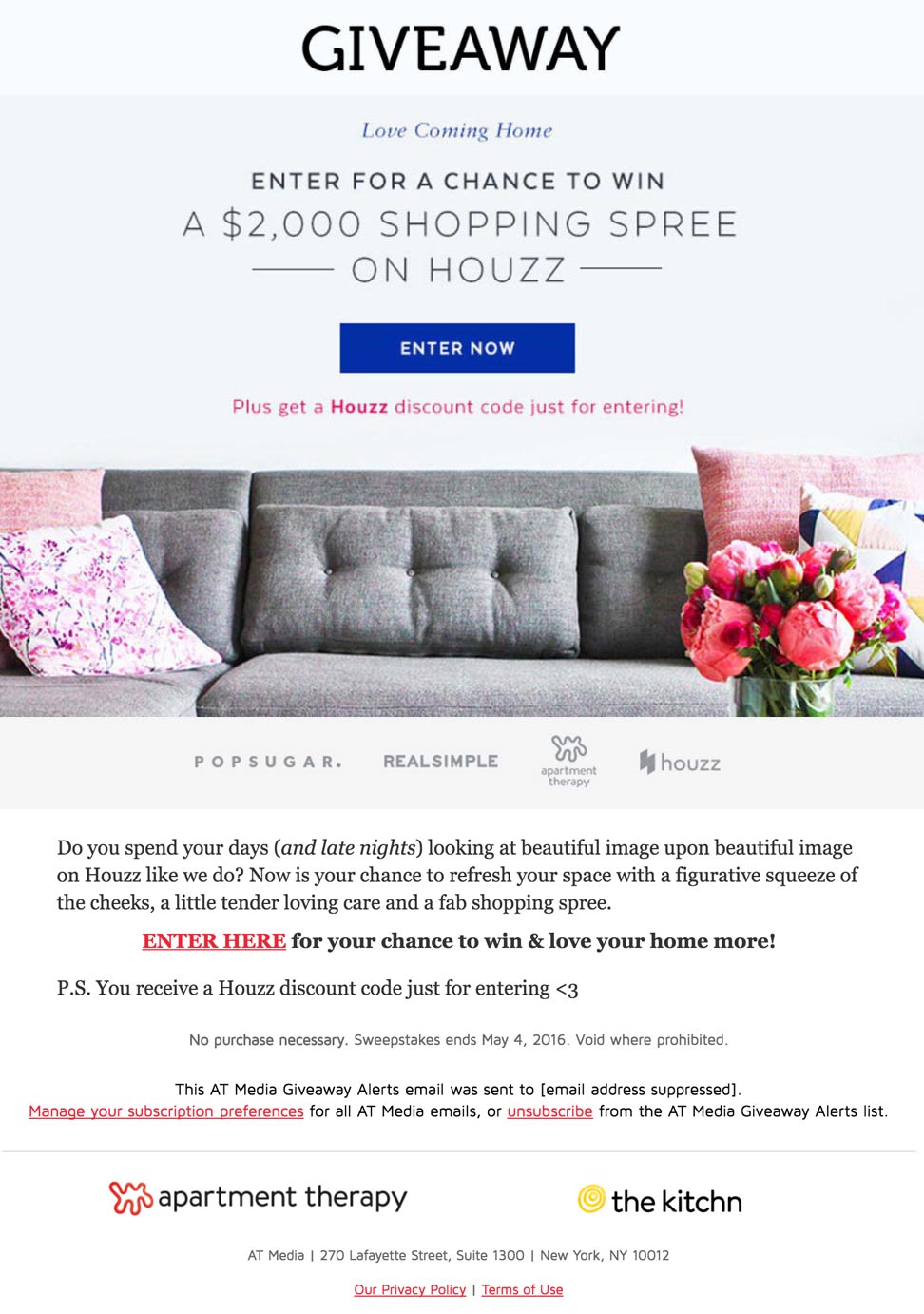
We’re growing our audience and delivering content at a remarkable rate, thanks to Campaign Monitor – Ashley Anderson, Director of Audience Development

Apartment Therapy’s sister brand, the kitchn, aims to inform and inspire every aspect of home cooking with recipes, lessons, product reviews, and kitchen design tips. They’ve seen massive success using email courses to share this type of content. These automated classes have open rates and click-through rates of over 50%, which means more and more subscribers are visiting their website and engaging with their brand.

BuzzFeed
BuzzFeed is a super-popular site where you can consume content about nearly any topic, from pop culture to puppies, parenting, and everything in between. Their content goes viral on a continual basis due to their engaging delivery and unique style.
To feed the wide needs of their subscribers, BuzzFeed has over 20 email newsletters that are catered to subscribers’ specific interests, like Health and Beauty as seen in this example email, that shares content about healthy snacking:
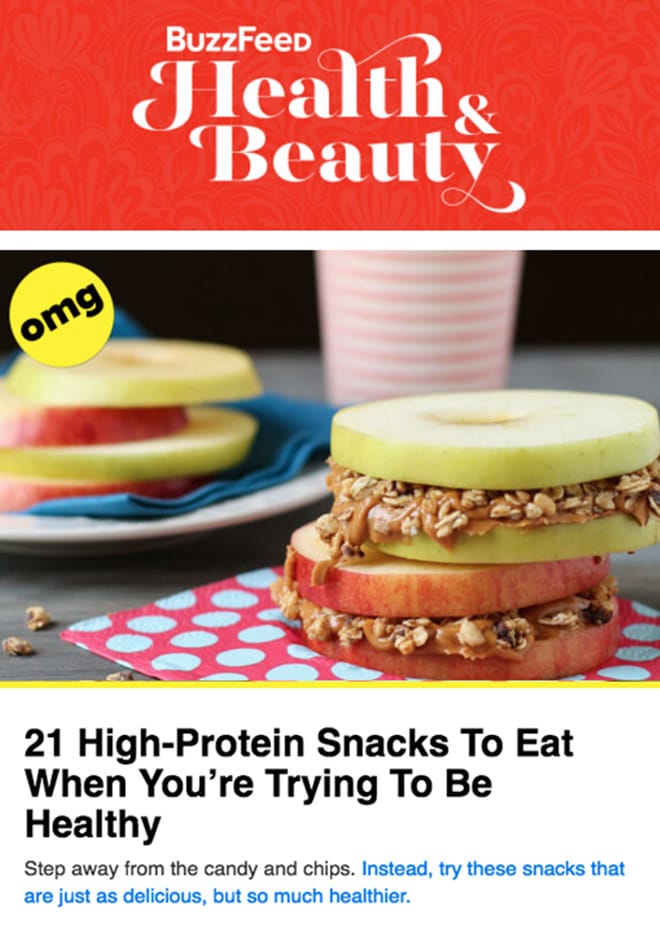
Segmenting their audience by interest is a smart bet for BuzzFeed, as research shows 56% of subscribers will opt out of your email list due to irrelevant content. In other words, publishers can’t send the same message to everyone, so segmenting content that’s created for specific interests is the best way to go.
BuzzFeed also puts email automation to work. The site offers a four-week “Get Fit” class to subscribers. Each week, an email with a new workout routine gets delivered to subscribers’ inboxes.
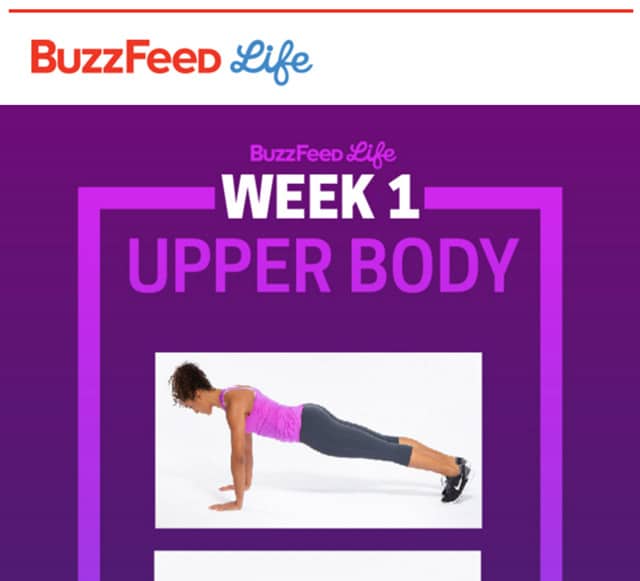
As we’ve seen in the Apartment Therapy and BuzzFeed examples, courses like these give publishers increased brand exposure, but, beyond that, they also offer subscribers something of value that benefits them.
Publishers can use email automation to schedule these “courses” to arrive every week or day at a certain time. The ability to schedule these emails ahead of time provides a consistent delivery schedule and keeps subscribers engaged in a way that doesn’t require a publisher to manually create and send the emails each time.
For BuzzFeed, email is one of the top five referrers of website traffic, and visitors from email spend three minutes longer on the site than visitors from other channels.
Campaign Monitor gives us the tools we need to create, send, and test more than 20 email newsletters and gives us the data we need to keep improving them. – Dan Oshinsky, Director of Newsletters

Rolling Stone
Rolling Stone, as a magazine, has rocked content for nearly 50 years. They continue to drum up excitement and keep their subscribers current about the latest music news, movie and album reviews, TV show recaps, politics, and pop culture happenings via their website. They use email marketing to drive visitors to the site to consume and engage with their latest news.
Publishers have found that one of the best ways to engage subscribers and drive traffic to a website is to give subscribers a sample of their best content. Publishers create a roundup of four or five of the best, most current pieces of content that are on the site and send subscribers a sample.
Rolling Stone’s weekly newsletter offers engaging snippets from recent articles and encourages readers to click through to the site to read the rest.
Rolling Stone’s weekly newsletter offers engaging snippets from recent articles and encourages readers to click-through to the site to read the rest.
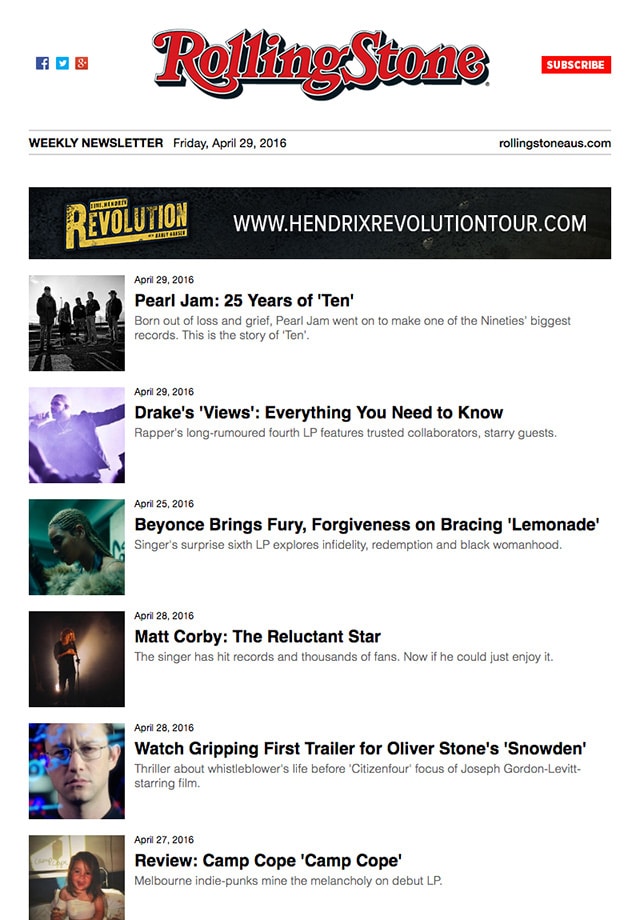
By curating their content in this manner, they drive traffic right to their website door.
Knowing the potential of their newsletter list, Rolling Stone advertises complementary events, tickets, and other items in their newsletter to monetize it and drive revenue, while still providing a benefit to subscribers.
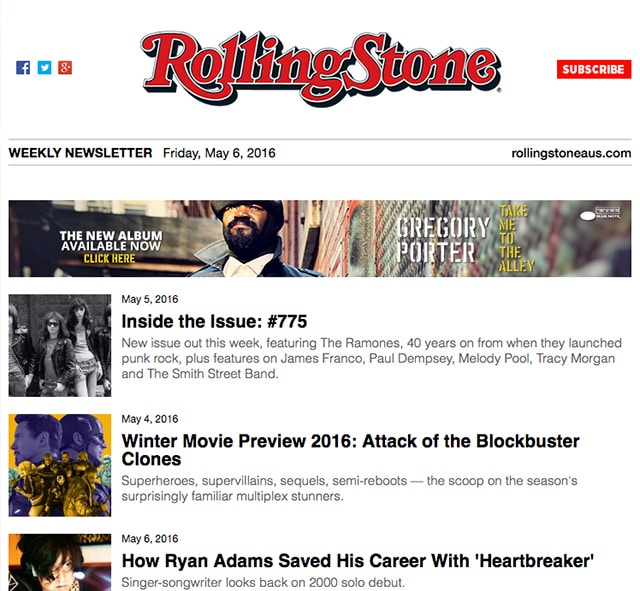
Email best practices for publishers
Publishers have a lot to keep up with, when it comes to their email marketing. Generally, audience building isn’t as much of a concern as making optimal use out of every piece of content. Publishers can send out their messages to millions of eager recipients, but how do they get the most out of each effort?
As mentioned, publishers often favor a cyclical approach. Email marketing for publishers involves having great content by default, but it’s about driving audience members through certain actions with each piece. For example, emails drive them to sales pages, sales pages to review sections, and so forth.
Best practices involve, first and foremost, optimizing content for engagement. While some smaller mailing lists set out with the goal of simply informing or audience building, publishers see their goals shift because of their audience size.
Utilize split CTAs to increase engagement.
Going for profitable engagement is one of the main ends of content marketing, in general. However, publishers should be trying to generate engagement at all times.
One way to do this is by splitting calls to action. With a much larger audience, they don’t have to worry as much about funneling all traffic towards one action. They can split it with links connected to multiple blogs/articles, various product pages, or a combination of the two.
Source: Campaign Monitor
This example shows how Buzzfeed focuses on filtering traffic back to their blog. However, they can offer some variety. Not only do they have enough content to do it, but they can likely benefit from this tactic. Prompting multiple blogs usually means prompting multiple CTAs within, and maybe even getting eyes on ads on each page.
As we can see, the process would already be in motion no matter which link the individual chose to follow. If each blog contains an opt-in offer for the email newsletter, even first-time viewers could cycle back to the email list from this content.
Publishers aren’t just going after engagement in the traditional sense of the term. They’re intertwining all their platforms and channels together in an effort to get the most interaction out of each.
Creating diverse content that adds value
Publishers should also try to focus on variety in their content. By doing this, they ensure the journey from channel to channel won’t become stale. The risk publishers face is promoting the same content and channels so often that users feel like they’re seeing the same thing over and over again.
By focusing on variety and diversification of content, publishers can keep audience members engaged whether they’re newcomers or return viewers that have been subscribed for years.
Wrap up
Publishers are using the power of email marketing to grow their audience, reach subscribers, and boost their revenue. Use the tips in this post to write your own email marketing success story like the publishers we’ve featured.
Just because you’re a publisher doesn’t automatically mean you’ll never engage in audience building. Great content is conducive to audience growth, but the way you engage your audience is also critical. You want to cycle traffic through multiple channels, and even use multiple CTAs, when the situation allows for it. Doing so helps you get more inventive and grow your audience more effectively.
As you grow your list, channels, and overall content, make sure you understand how to prepare for growth ahead of time.






